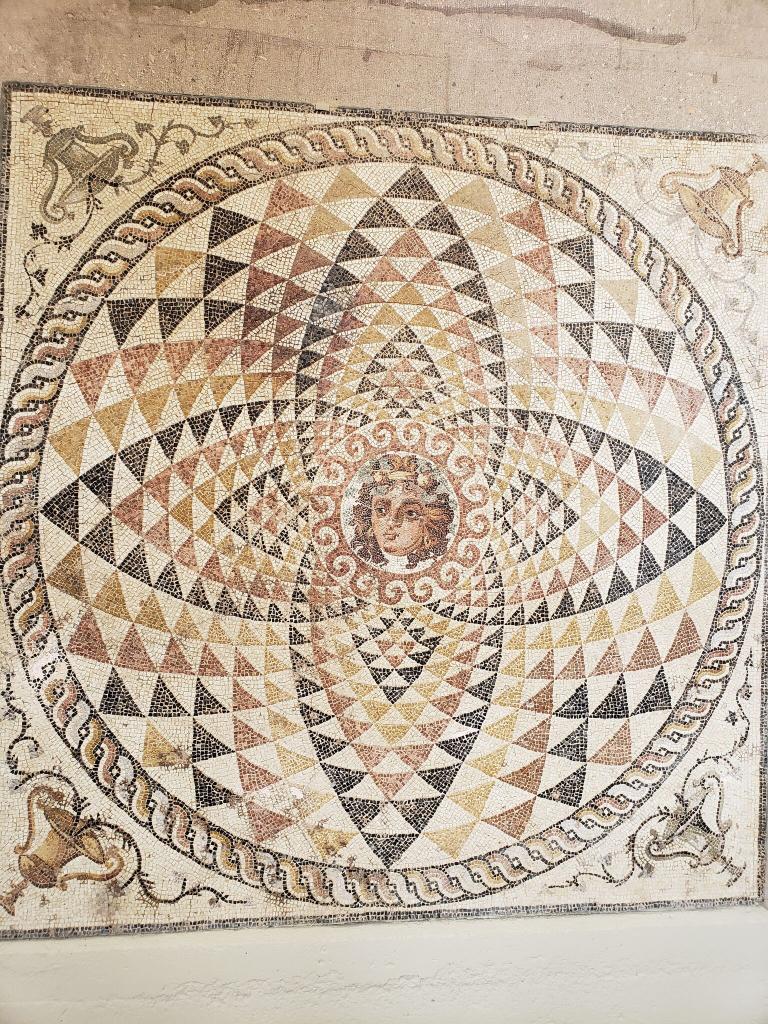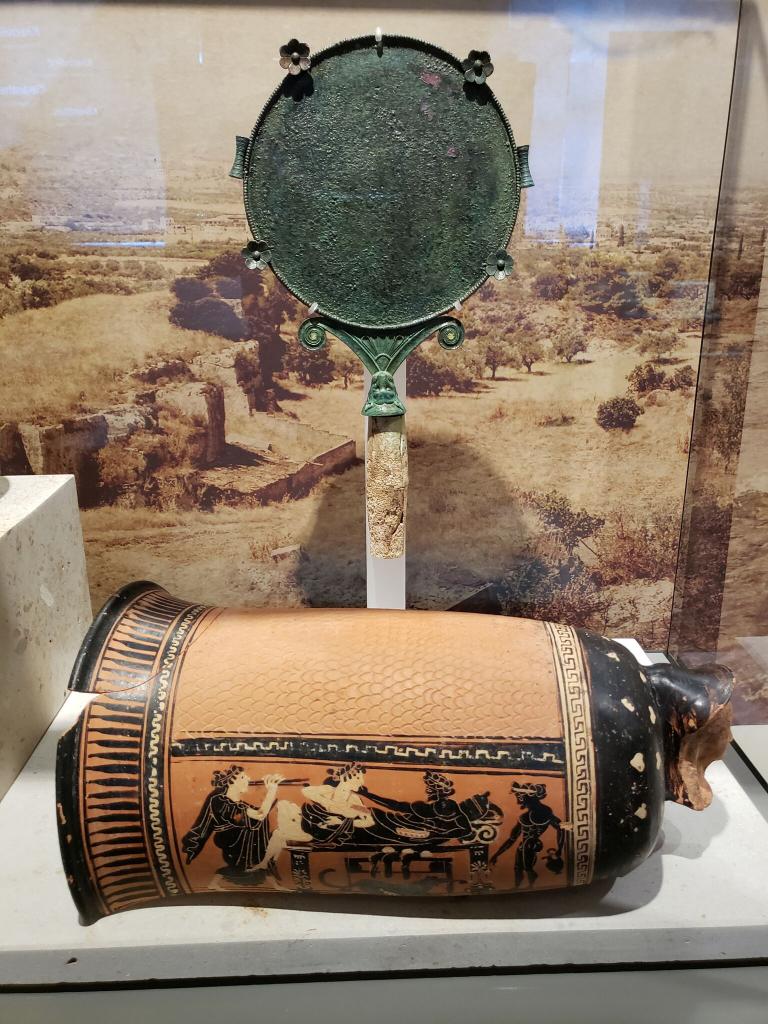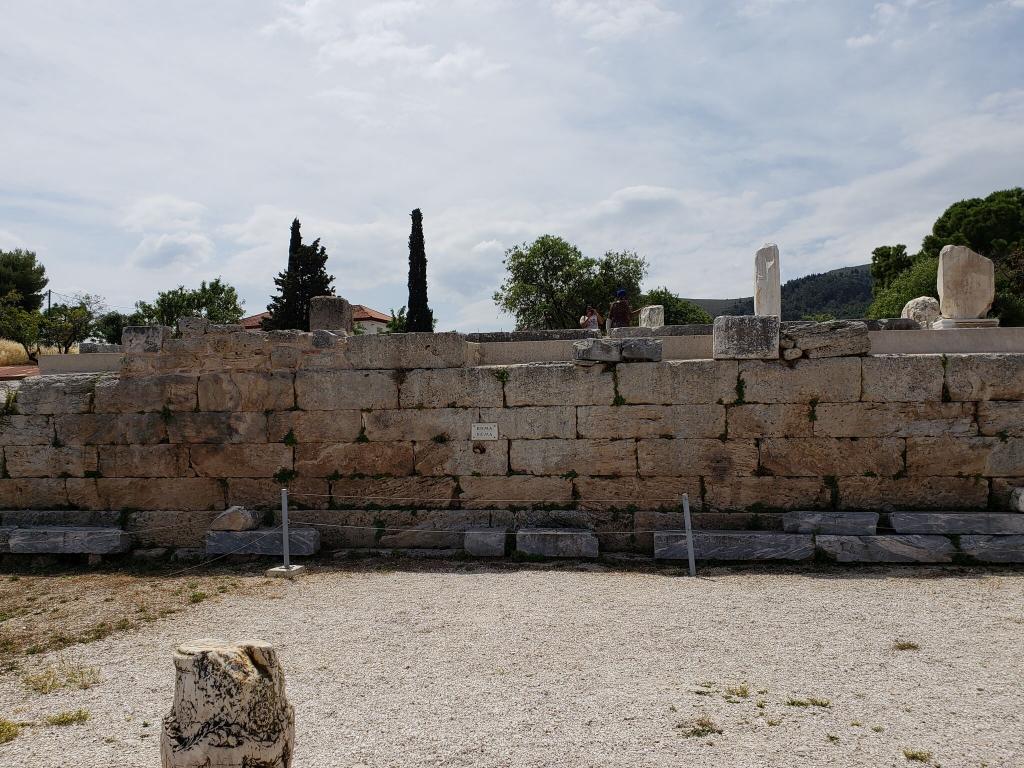 American can be proud that we have had so much to do with the dig at ancient Corinth, which fortunately was not buried beneath the modern city of Corinth. American archaeologists have worked there since before the middle of the 20th century, and much has come to light. I had the privilege of watching the excavation of a villa up above the city proper in the little village beside the site. What was unearthed was spectacular mosaic floors, such as these now housed in the Corinth museum…
American can be proud that we have had so much to do with the dig at ancient Corinth, which fortunately was not buried beneath the modern city of Corinth. American archaeologists have worked there since before the middle of the 20th century, and much has come to light. I had the privilege of watching the excavation of a villa up above the city proper in the little village beside the site. What was unearthed was spectacular mosaic floors, such as these now housed in the Corinth museum…



There was indeed considerable wealth in Corinth, and there can be little doubt that Paul had as part of his evangelism strategy the conversion of someone of high status who had a villa where the new converts to the Jesus movement could meet, for they met in homes, not in temples or shops. Phoebe was one such person, as was Sosthenes and other high status Jews, as was Erastus. For a creative look at Corinth while Paul was there see my novella A Week in the Life of Corinth. Of course the down side to wealth, is it normally involved buying slaves to do the manual labor in the vineyards and elsewhere, and there was a major slave market in Corinth. Here is a statue of a slave in the Corinth museum… Domestic slaves worked in the villa itself, sometimes washing dishes like these…
Domestic slaves worked in the villa itself, sometimes washing dishes like these… Sometimes holding bronze mirrors so the mistress of the house could do her face painting…
Sometimes holding bronze mirrors so the mistress of the house could do her face painting… There is no question but that the Greco-Roman values caused all sorts of challenges to Jewish morality, and yet there was a thriving Jewish synagogue in Corinth, even a synagogue of the Hebrews, as this lintel makes clear…. which means a synagogue where Hebrew speaking Jews met and worshipped in Hebrew. These were not overly-Hellenized Jews, but presumably Jews from the Promised Land itself.
There is no question but that the Greco-Roman values caused all sorts of challenges to Jewish morality, and yet there was a thriving Jewish synagogue in Corinth, even a synagogue of the Hebrews, as this lintel makes clear…. which means a synagogue where Hebrew speaking Jews met and worshipped in Hebrew. These were not overly-Hellenized Jews, but presumably Jews from the Promised Land itself.
There is much more we could say about Corinth. We could talk about the sacrifices offered there, and how Paul warned his converts to stay out of the pagan temples with their feasts in which pagan gods were believed to participate (1 Cor. 8-10).  We could talk about the ceremonial processions leading up to the sacrifices, involving music (noting the musical instruments on this monument…)
We could talk about the ceremonial processions leading up to the sacrifices, involving music (noting the musical instruments on this monument…)  We could revisit the bema where Paul appeared before Gallio, and Gallio dismissed the case against Paul.
We could revisit the bema where Paul appeared before Gallio, and Gallio dismissed the case against Paul.  For those wanting more, I can commend my commentary— Conflict and Community in Corinth.
For those wanting more, I can commend my commentary— Conflict and Community in Corinth.












